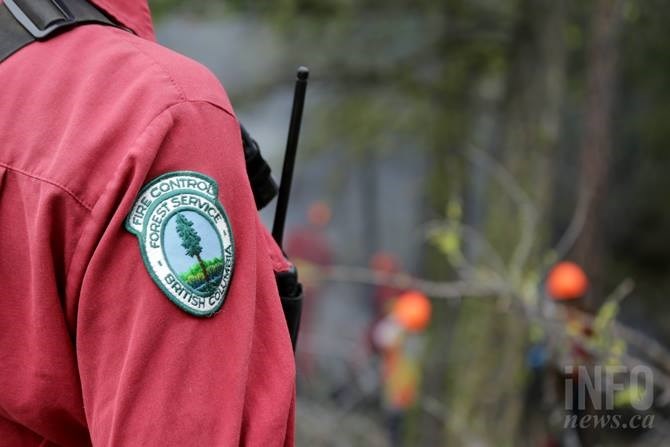
(JENNIFER STAHN / iNFOnews.ca)
April 21, 2016 - 10:38 AM
KAMLOOPS, B.C. - More than 40 wildfires continued to burn Wednesday throughout northeastern B.C., but residents chased from their homes by the flames were allowed to return.
Evacuation orders were lifted in three communities near Fort St. John, though residents in those areas and two others were warned that they should be ready to leave again at a moment's notice.
More help was also on its way to help the 200 personnel either working on the ground or in support roles to battle the blazes.
An air tanker group based in Fort St. John was set to start work Wednesday afternoon and another group based in Prince George was scheduled join the fight Thursday.
"Traditionally, the air tanker fleet doesn't come on line until later into April," said fire information officer Kevin Skrepnek. "Given the conditions that we've been seeing out there, we did want to bring them on a little bit early."
Twenty new fires were sparked across the province Tuesday, 13 of them in the area overseen by the Prince George Fire Centre, where Fort St. John is located.
Cooler weather helped crews fight the fires, Skrepnek said.
"The fire activity we saw on Monday was driven by a really significant weather pattern that came through. We saw winds up to 90 kilometres an hour and highs, in some cases in the area, of up to 28 degrees. Things have become much more seasonal since then," he said.
The largest fire in the area is near Beaton Airport Road, about 45 kilometres north of Fort St. John, and was estimated to be about 55-square-kilometres in size.
Chris Duffy, executive director of B.C.'s emergency management office, says several buildings and garages have been lost to the early fire season.
"While there have been a few structure losses, we are very fortunate that there were no injuries or loss of life," he said.
There have been 143 fires across the province so far this year, marking an early and forceful start to the wildfire season.
But Skrepnek says it's too soon to tell if the early fires are a harbinger of what's to come because it's impossible to forecast precipitation.
"The rain that we see between now and the end of June, the spring rains, have a really key factor in how the rest of the fire season is going to progress," he said.
News from © The Canadian Press, 2016